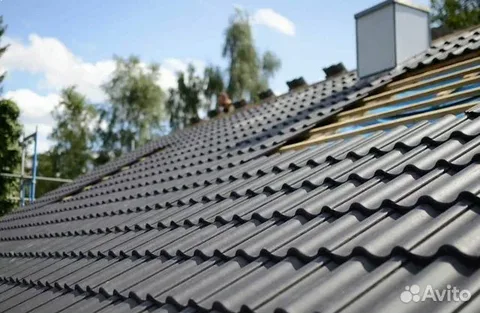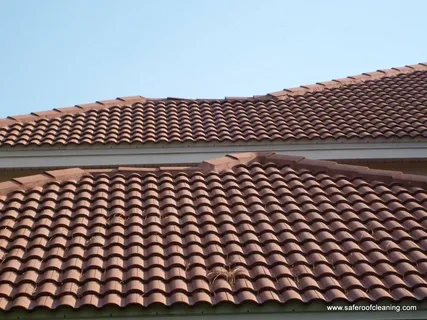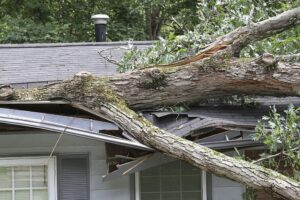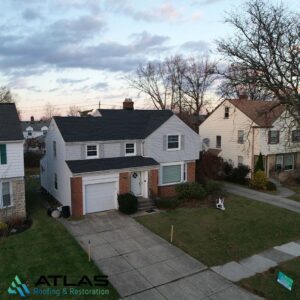When it comes to selecting a roofing material for your commercial building, the choices can be overwhelming. Three of the most popular options are Thermoplastic Olefin (TPO), Ethylene Propylene Diene Monomer (EPDM), and Polyvinyl Chloride (PVC). Each material offers a distinct set of advantages and considerations, depending on factors like budget, climate, durability, and energy efficiency. In this blog, we’ll explore the differences between these three roofing systems, helping you make an informed decision that best suits your commercial property.
Understanding Commercial Roof Materials
Before diving into the specifics of TPO, EPDM, and PVC, let’s take a moment to understand what commercial roofing is all about. Commercial roofs are flat or low-slope roofs found on office buildings, retail stores, warehouses, and industrial facilities. A reliable roofing system is essential for protecting the building, preventing leaks, and maintaining energy efficiency. Over the years, various roofing materials have been developed, each designed to address specific needs in commercial roofing.
1. TPO (Thermoplastic Olefin) Roofing
What is TPO?
TPO is a single-ply roofing membrane that is made from a combination of polypropylene and ethylene-propylene rubber. It’s a relatively newer roofing material compared to EPDM and PVC but has quickly gained popularity due to its cost-effectiveness and energy-efficient properties.
Pros of TPO Roofing:
- Energy Efficiency: One of the standout features of TPO is its reflective properties. TPO roofing systems are highly reflective, which helps in reducing cooling costs by reflecting the sun’s heat away from the building. This is particularly advantageous in hot climates, as it can lead to significant energy savings.
- Durability: TPO is known for its strength and resistance to ultraviolet (UV) rays, ozone, and weathering. This makes it ideal for long-term durability, especially in regions with extreme weather conditions.
- Cost-Effective: When compared to PVC and some other commercial roofing options, TPO tends to be more affordable. It offers a great balance between performance and cost, making it a popular choice for many business owners.
- Heat-Welded Seams: TPO roofs feature heat-welded seams, which are more durable and waterproof compared to glued seams. This reduces the likelihood of leaks and increases the overall lifespan of the roof.
Cons of TPO Roofing:
- Newer Material: While TPO has been on the market for a couple of decades, it’s still considered relatively new when compared to EPDM and PVC. This means that some long-term performance characteristics, especially in harsh climates, are still being studied.
- Potential for Punctures: Although durable, TPO can be more prone to punctures when subjected to heavy foot traffic or harsh weather events.
2. EPDM (Ethylene Propylene Diene Monomer) Roofing
What is EPDM?
EPDM is a synthetic rubber roofing membrane that has been around for over 40 years. It’s made from a combination of ethylene, propylene, and a diene monomer that gives it its elasticity. EPDM is widely regarded as one of the most reliable and time-tested roofing materials in the industry.
Pros of EPDM Roofing:
- Proven Longevity: EPDM has a long track record of reliability. With proper installation and maintenance, EPDM roofs can last upwards of 30 to 50 years, making them one of the longest-lasting options available.
- Ease of Installation: EPDM membranes are typically rolled out and adhered to the roof structure, making installation quick and efficient. This can translate into cost savings in both labor and time.
- Excellent Waterproofing: EPDM is known for its superior waterproofing capabilities. Its rubber-like properties make it incredibly effective at sealing out water, reducing the risk of leaks and water damage to your building.
- Flexibility in Cold Weather: One of the key benefits of EPDM is its flexibility, even in cold weather. Unlike some other materials that become brittle in freezing temperatures, EPDM remains flexible and durable.
Cons of EPDM Roofing:
- Black Color Retention: Traditional EPDM roofing is black, which absorbs heat from the sun. While this may be beneficial in colder climates, it can lead to higher cooling costs in warmer areas. However, there are reflective coatings available that can help mitigate this issue.
- Seam Issues: Although EPDM has proven to be a reliable roofing system, the seams where the panels meet can sometimes be prone to failure if not properly installed or maintained.
3. PVC (Polyvinyl Chloride) Roofing
What is PVC?
PVC roofing is another type of single-ply membrane that’s made from a combination of vinyl, plasticizers, and other additives. PVC roofing systems are commonly used in commercial and industrial applications due to their strength and resistance to chemicals, fire, and extreme weather.
Pros of PVC Roofing:
- Chemical Resistance: One of the major benefits of PVC roofing is its resistance to a wide variety of chemicals. This makes it ideal for buildings that handle or store chemicals, oils, or grease. If your commercial building falls under these categories, PVC may be the best choice for you.
- Energy Efficiency: Like TPO, PVC roofing has reflective properties that help in reducing cooling costs by reflecting sunlight away from the building. This helps in maintaining a comfortable indoor temperature while reducing energy consumption.
- Fire Resistance: PVC roofing is naturally fire-resistant, which can be a crucial consideration for certain commercial buildings, particularly those in industrial zones where fire hazards are more common.
- Long Lifespan: With proper care and maintenance, PVC roofs can last up to 30 years or more. Their durability is one of the reasons why many business owners opt for PVC.
Cons of PVC Roofing:
- Cost: PVC roofing tends to be more expensive than both TPO and EPDM, both in terms of material costs and installation. This can make it a less attractive option for budget-conscious business owners.
- Susceptibility to Punctures: While durable, PVC can be punctured under extreme conditions, particularly if it’s exposed to sharp objects or harsh weather conditions. Proper installation and careful maintenance are key to preventing this issue.
How to Choose the Right Roofing Material for Your Commercial Building
When deciding between TPO, EPDM, and PVC, there are several factors to consider:
- Climate: The climate where your commercial property is located plays a major role in your decision. TPO and PVC are great choices for hot climates due to their reflective properties, while EPDM can be a better option in colder regions because of its flexibility in low temperatures.
- Budget: If cost is a major consideration, TPO is often the most affordable option. EPDM is also relatively budget-friendly, while PVC tends to be the most expensive.
- Roof Durability: All three materials are durable, but if you’re looking for a long-term, reliable roofing solution, EPDM and PVC are excellent options. TPO is durable but still considered a newer material with fewer long-term studies.
- Maintenance: Regular maintenance is key to ensuring your commercial roof lasts. EPDM requires less frequent maintenance, while TPO and PVC may need more attention to keep the seams intact and prevent leaks.
Conclusion
Choosing between TPO, EPDM, and PVC for your commercial roof ultimately depends on your specific needs, budget, and the climate in which your business operates. Each of these materials offers unique benefits and certain limitations. TPO is a cost-effective option with energy-saving benefits, EPDM is a long-lasting and reliable choice, and PVC is the best option if chemical resistance and fireproofing are critical for your building.

If you are considering a new commercial roof or need to replace your existing roof, Atlas Roofing & Restoration is here to help. With years of experience in the roofing industry, our team can guide you in choosing the best roofing material for your property. Whether you need TPO, EPDM, or PVC roofing solutions, we offer expert installation and repair services to ensure the longevity and durability of your commercial roof. Contact us today to get started!




